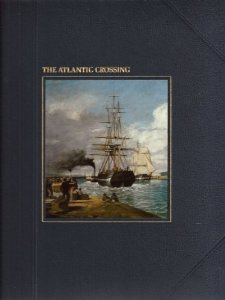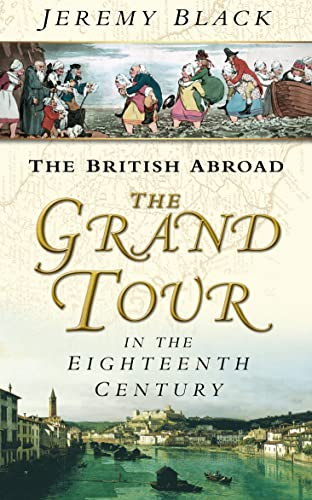At work we’re in research mode, preparing for our new exhibition about travel in the 19th century. Based on my interests and previous research avenues I got handed the Grand Tour and a piece of the cruise industry as my responsibilities. For the past few weeks, I’ve been scouring all my usual resource repositories, googling some very interesting UK museum websites, and our curator made sure I had some books to work my way through. They’ve been… a mixed bag.
The Seafarers: The Atlantic Crossing by Melvin Maddocks was purchased primarily for its images and having worked my way through it I can verify that it is the area of its greatest worth. The publication year on this one, 1981, kind of gives away my issues with it – it is the kind of work that gives history books a bad name, but also shows just how far historical inquiry has come in the ways in which we discuss native populations and the enslaved. A book published now would have a very different tale to tell about Pocahontas and would include more than a few sentences regarding the transportation of enslaved populations across the Atlantic. I was able to get information I needed on the types of ships making the Atlantic crossing at different times, but I backed away from relying on the narrative for much else, preferring to get my information elsewhere.
The British Abroad: The Grand Tour in the Eighteenth Century by Jeremy Black was an improvement as far as content and history writing. But reading this one was still painful but for entirely different reasons. Two stars for good information, Black did the work to dig out primary source information held in a variety of collections and repositories to build out the story making this one of the first major works on the topic. But it gets no further stars from me for the unpleasantness of reading experience. A lot of it has to do with printer choices – paper, font size, indentations demarking quotes – but it also had a lot to do with authorial tone which mentally brought me back to my worst college lectures where my oppositional defiance wanted me to take a nap and wait the blowhard out (the professor, not the author). I worked my way through by treating it more as a reference than a narrative, but that was a workaround. But a workaround I would do again because the book does have some of the best information available and because of the author’s decision to have a defined Conclusion section at the end of each chapter I was able to easily hunt up answers to the various questions I had.
Traveling Beyond Her Sphere: American Women on the Grand Tour 1814-1914 by Bess Beatty was the book that held my highest hopes and let me down the least (I know, faint praise). The people associated with our historic sites who travelled to Europe were American women in that century of time – perfect, just the book I needed. Like in The British Abroad, Beatty spent the time in repositories and unearthed a treasure trove of primary sources to fill out the narrative of the century between major European wars that led to the golden age of American Grand Tours and the reasons and ramifications of the women embarking on these Tours. While the narrative can feel a bit as though the author is just bouncing from account to account which can make it a sometimes difficult read to stick through there is a lot of really important information here. There were a few issues a stronger editorial read could have helped avoid, but all in all a book I’m glad we have for our reference shelves.





